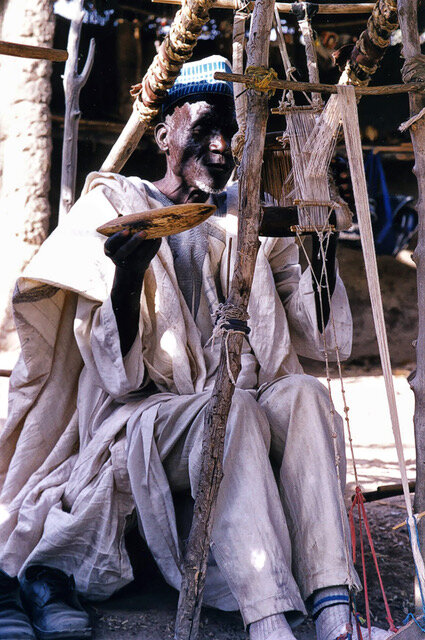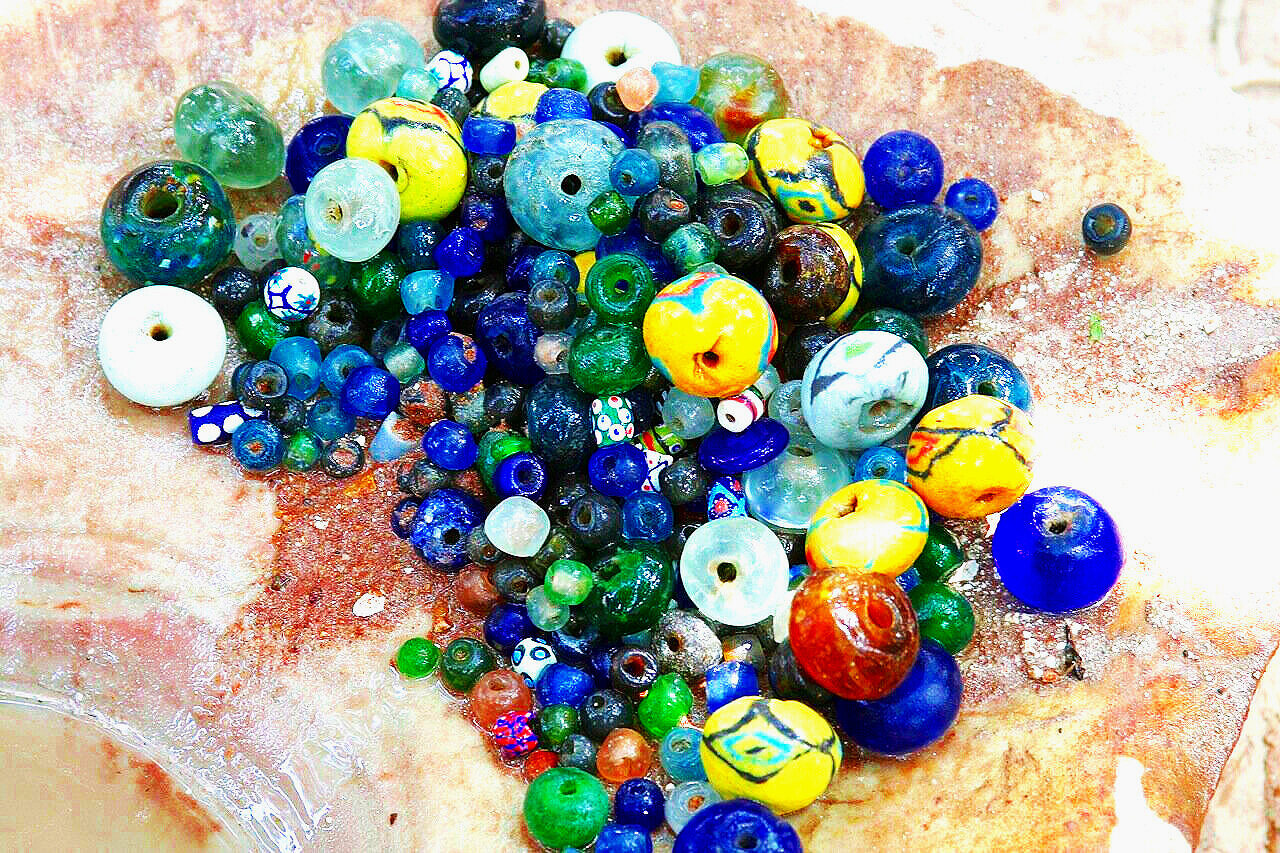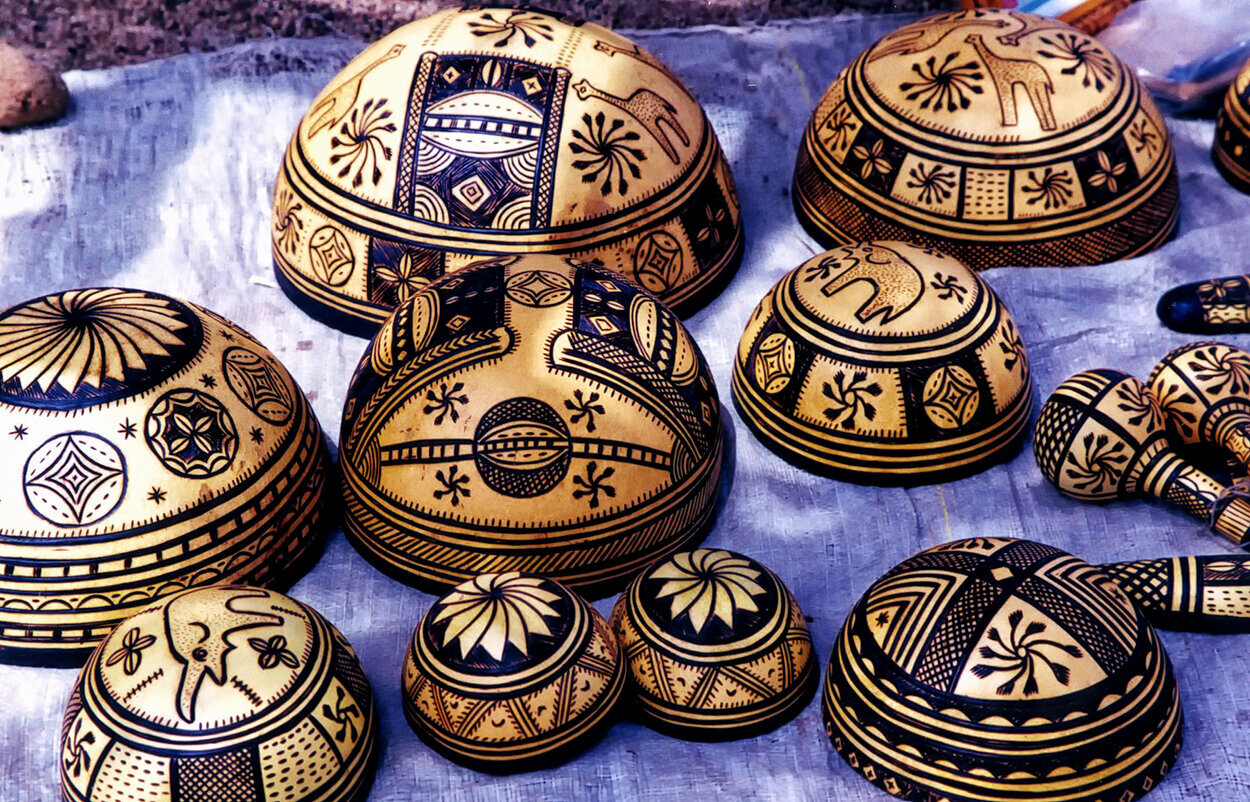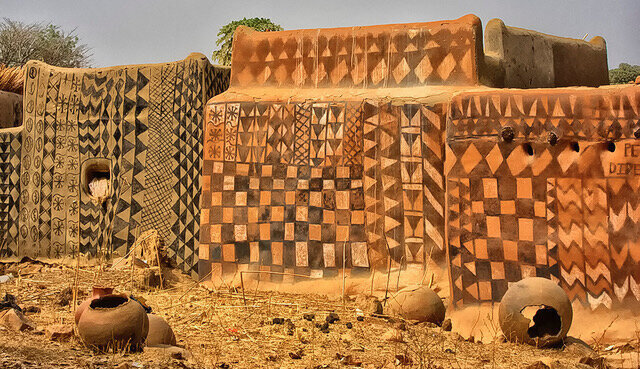
West African Cotton Cloth
Cotton cloth once used as currency
Cotton strips were used as currency in sub-Sahara Africa as far back as the 11th and 12th centuries, and later during the slave trade from the 16th to 18th centuries. Cotton cloth was easy to transport, versatile, and valuable: it could be made into clothes or used for protection from the elements, for funeral shrouds, for baby carriers, or to carry things.
On a trip to the Dogon country in Mali in 2001, I heard about the Dogon’s burial caves along the Bandiagara Escarpment. The family of the deceased wrapped the dead body in a shroud made from tightly woven narrow cotton bands sewn together to form a burial blanket. This cotton wrapper could be dyed in indigo, as blue facilitated the journey from this world to the next. On a hike through this renowned escarpment to meet an indigo artisan, Maryama, I met this elderly male weaver working on a horizontal “toe loom” in one of the villages. (In some parts of Africa, such looms are called toe looms because the treadles are attached to the weaver’s big toes.)
I was curious about his loom, so upon returning to San Francisco, I asked a weaving expert, Louise Hale, a highly skilled weaver for more than 50 years, if she could comment on it. When I showed her photos of the weaver and his loom, she offered this description of the loom:
• The loom appears to be “two harness”; the harnesses are controlled by his feet.
• The warp, length-wise yarns, appear to be tensioned horizontally and upward at a 30-degree angle. The warp yarns are probably attached to a tree trunk or stationary post.
• The lower two white triangles are attached to the treadles, which cannot be seen in this photo. He alternates stepping on the treadles to raise and lower the harnesses, creating an interlacement.
• He could be supplementing the textile manually by adding weft yarns. The reed that keeps the warp yarns separate is the tan-colored piece in his hand. He is probably beating the weft into place.
• The dark beam across his lap close to his body is a front beam, which he rolls to hold the completed weaving. The tension on the front beam is probably held in position by a strap around his back (not visible in the photo). He keeps an even tension on the warp by maintaining the same posture.
• The upper upside-down-“U”-shaped device with two rollers allows the harnesses to move quickly when he presses down on the treadles, one after the other, to create the interlacement of the weave.
Despite his advanced age, the weaver had tremendous strength, concentration, coordination, and skill to weave his narrow cotton strips. He was using a portable loom, weighed with a drag stone to give tension to the threads. This loom produced a long narrow strip of cotton, which would be cut up and sewn together to produce a large piece of cloth.
I was so impressed with this weaver and his work, I bought a roll of his tightly woven six-inch strips measuring 12 feet in length. I paid him more than he was asking and gave him a pair of reading glasses to help in his handweaving. As I was leaving, he motioned to his lower back, and I quickly deduced that he wanted a pain reliever. I reached into my backpack and found a tube of Bengay, which brought a broad smile to his face after my Dogon guide explained what it was for and how to use it.










